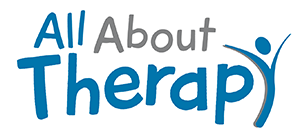Gravitational insecurity is an excessive fear of movement that is not usually threatening. The idea behind this is that most people feel securely rooted on the ground, and due to gravity, they feel like they won’t float away spontaneously. However, if a child does not feel securely rooted on the ground, they may feel gravitationally insecure. They may be afraid of moving themselves, being moved by someone else, or having their feet off the ground. Children who feel gravitationally insecure may avoid going on swings, jumping, having someone pick them up, or sitting on a chair that is too high for their feet to touch the ground.
Gravitational insecurity comes from an overreactive vestibular response. Vestibular input is anything that involves movement or a change in head position. This can include standing up off the floor, bending down to pick something up, crawling or walking over an uneven surface, or climbing up playground equipment. Organs located in the inner ear detect movement and the pull of gravity and are responsible for perceived vestibular input.
Here are some red flags to look for if you think your child may have gravitational insecurity:
- -Appearing anxious when moved or picked up.
- -Won’t go on escalators or elevators.
- -Does not like to go on moving toys, such as a rocking horse, toy car, etc.
- -Dislikes being upside down.
- -Expresses distress when you take them from a standing up position to a lying down position, such as during a diaper change.
- -Cries or resists having their head tilted back during a bath.
- -Avoids going up or down stairs or takes a longer time than other children.
- -Won’t crawl or walk on uneven surfaces.
- -Feeling nauseous with movement activities.
Some tips for parents:
- -Allow increased time for your child to explore movement activities. Think little steps!
- -Consider exploring event locations that involve movement before the event takes place. For example, if a birthday party is going to be at a new park, go to the park and let your child explore beforehand.
- -Start with movement activities that allow your child’s feet to be on the ground, such as a low swing.
- -Gentle back and forth movement is usually easier to tolerate than movement in circles. Having your head upside down is usually the most difficult type of movement to tolerate.
- -Added weight can sometimes help your child feel more gravitationally secure. For example, if your child is having difficulty walking over uneven surfaces, trying having them hold a small bean bag in their hand or pocket while walking.
If you think your child may have gravitational insecurity, talk to a pediatric occupational therapist. Given structured occupational therapy, children can learn to feel more secure with a wider variety of movement and be more successful with their activities of daily living. You can real us at https://allabouttherapyforkids.com/
Get more tips, interact with our OT’s and connect with other parents by joining our Facebook Group Here.



